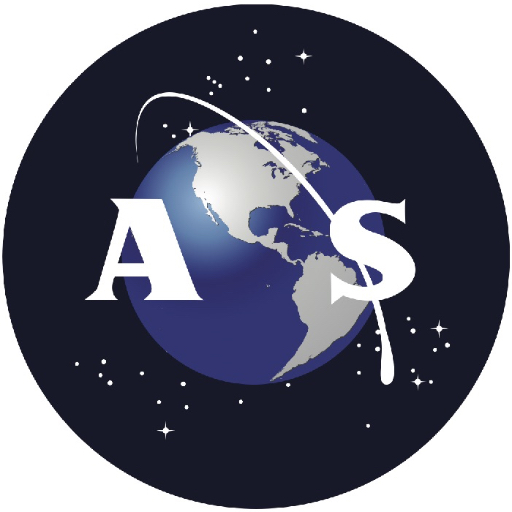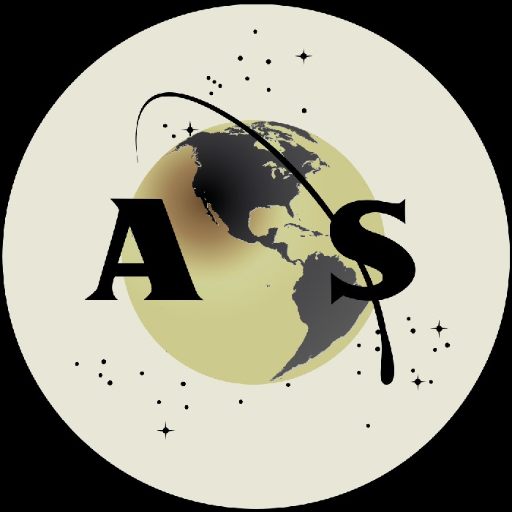
The team guiding Europe’s history-making Rosetta mission to orbit and land on a comet for the first time in human history is planning for even more remarkable science achievements at comet 67P/Churyumov–Gerasimenko in the year ahead, during its primary mission phase, including an extremely close and bold flyby.
Rosetta and its attached Philae landing craft arrived at comet 67P on Aug. 5 after a decade-long interplanetary journey of some 500 million kilometers (300 million miles) from Earth at 41,000 mph on a mission of cutting-edge science to elucidate our origins.
Among the objectives of the audacious Rosetta/Philae mission, developed and funded by the European Space Agency (ESA), is it seeks to determine if comets played a role in the origin of life on Earth.
After reaching comet 67P, the Rosetta team then worked feverishly on a very compressed time schedule to find a safe and scientifically interesting landing site to deploy Philae barely three months later on Nov. 12 to touchdown on the head of the bizarre comet, shaped like a rubber ducky.
“Rosetta’s science mission really began with the Philae landing on comet 67P,” said Matt Taylor, the Rosetta project scientist from the European Space Research and Technology Center, Noordwijk, the Netherlands, during a Dec. 17 mission press conference held at the annual meeting of the American Geophysical Union (AGU) in San Francisco, Calif.
And Taylor reported that Rosetta’s science gathering investigation has further exciting events upcoming and may continue longer than expected.
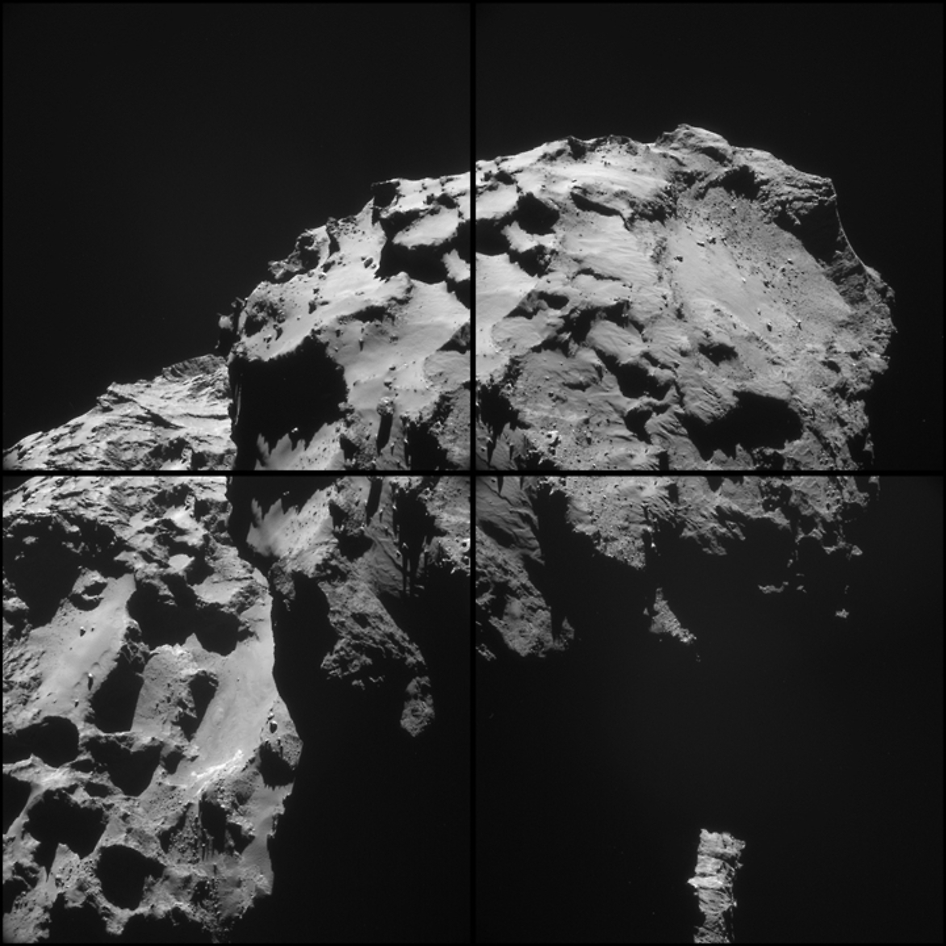
An ultra close flyby is planned for February 2015, when Rosetta is expected to swoop down within four miles (six kilometers) of the surface of comet 67P. That flyby marks the closest that ESA’s robotic probe will approach during its prime mission.
“It is the earliest we could carry it out without impacting the vitally important bound orbits that are currently being flown,” said Taylor.
“As the comet becomes more and more active, it will not be possible to get so close to the comet. So this opportunity is very unique.”
Rosetta is escorting the comet around the Sun, and both are approaching ever closer to the sun. They will reach perihelion in August 2015.
During the low flyby, Rosetta’s cameras will image the comet with an unprecedented resolution of a few inches (tens of centimeters) per pixel.
The imagery is expected to yield even better data on the comet’s porosity and albedo.
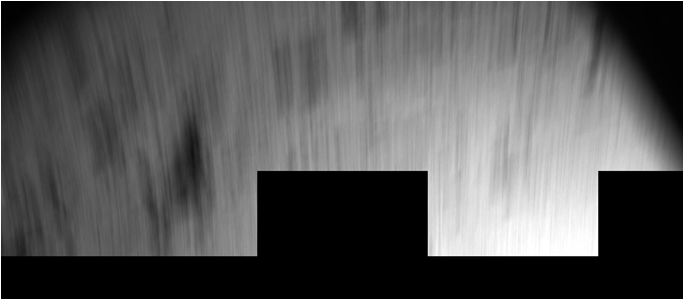
“Rosetta is providing us with a grandstand seat of the comet throughout the next year. This flyby will put us track side — it’s going to be that close,” said Taylor.
The flyby will also allow the study of the processes by which cometary dust is accelerated by the cometary gas emission, according to the team.
As the pair fly nearer, the comet’s nucleus will become more active, spewing out gas and dust which is a boon for comet science, but also rather risky for the spacecraft’s health.
So the probe’s close flyby is timed for February to balance science and safety. At some point Rosetta will have to retreat somewhat due to the ever increasing outgassing.
Depending on a variety of factors such as the spacecraft’s health and residual fuel, the mission may last longer.
“We hope to extend the mission beyond its current end date in late 2015 and into 2016, depending on the remaining fuel,” said Taylor.
Last week, results from Rosetta’s ROSINA instrument found that the isotopic composition of water vapor from comet 67P is significantly different compared to that found in Earth’s oceans. This indicates that water rich asteroids likely delivered more water to early Earth than comets, according to ROSINA Principal Investigator at the University of Bern, Switzerland.
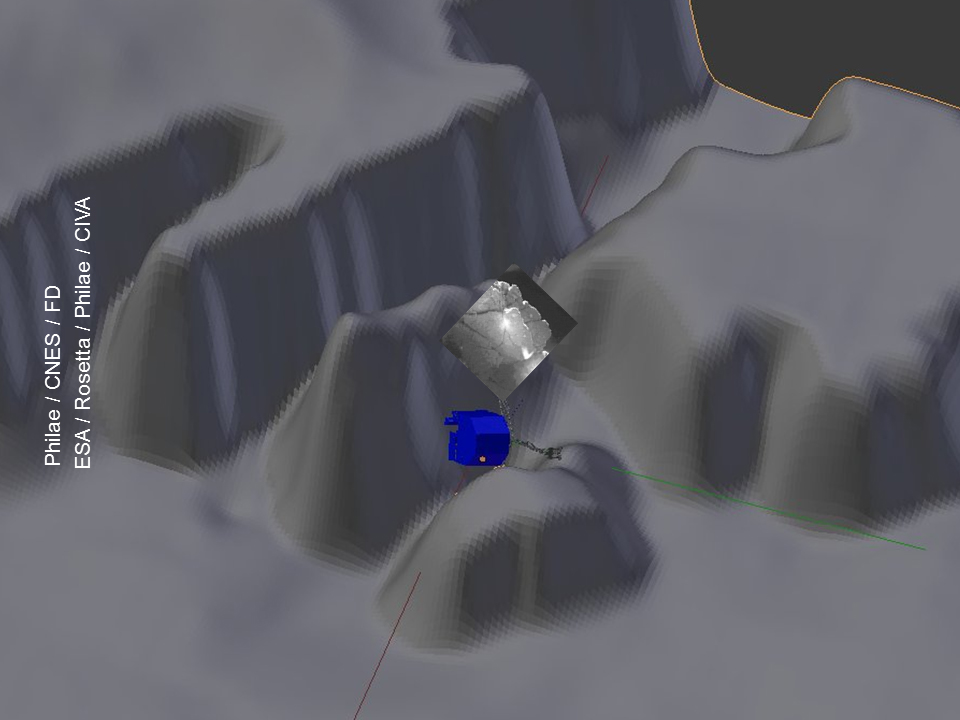
The team is also hoping for a revival of the Philae lander sometime early in 2015 as the illumination at the landing site increases and the solar panels generate enough electricity to awaken the spacecraft.
“Maybe Philae will awaken in February or March,” said Jean-Pierre Bibring, Lead Lander Scientist at the Institut d’Astrophysique Spatiale, Orsay, France, at the briefing.
“We need to get sufficient energy to awaken. The question is did it survive. We think so.”
“We had a successful acrobatic landing by a cliff. We have to wait now and it’s frustrating. But we hope for more from Philae in the future.”
“Philae landed at a tilted angle by what we are calling the perihelion cliff. Sun arrives only at a limited angle and for about two hours per day vs. the planned six hours at the targeted landing site.”
“So it was forced to shut down due to lack of energy. The site is shadowed by the perihelion cliff.”
“The lander photos show many fractures with linear patterns. There is a large diversity of materials.”
“Its possibly pristine blocks of ice loaded with organics.”
“Samples were analyzed by the COSAC and PTOLEMY instruments. Results are expected soon. There seem to be lots of organics. Some with a mass greater than 100 amu.”
But definite results await a full and careful analysis of all the data.
“All of Philae’s instruments were exercised and we are analyzing the data,” said Bibring.
Bibring also showed new Philae images taken from the surface and a graphic illustrating the team’s current best estimate of the lander’s position on the surface.
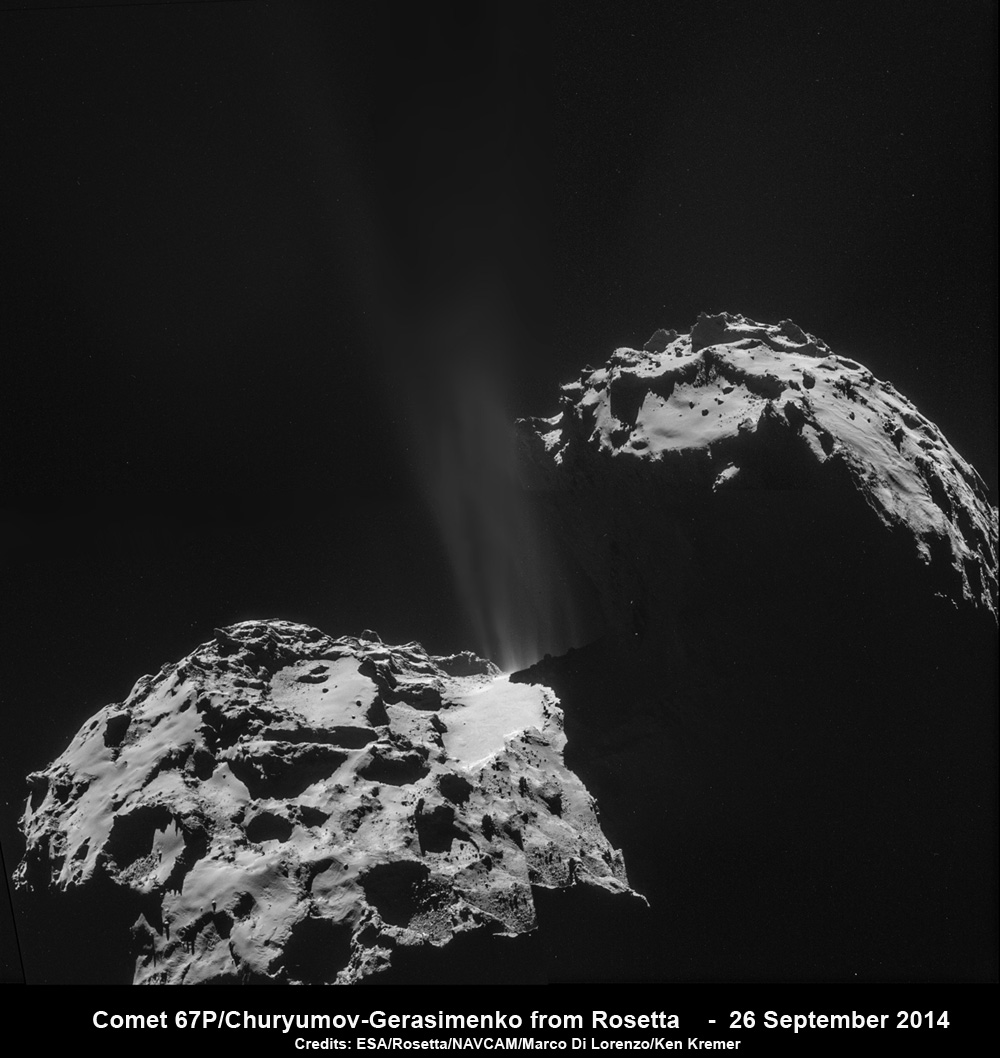
Philae was deployed by Rosetta on Nov. 12 for a nail-biting uncontrolled seven-hour-long descent to the surface. The robotic probe finally came to rest on the distant comet—but only after a harrowing journey that unexpectedly included two rebounds back into space from its initially targeted touchdown zone at a spot named “Agilkia.”
Philae not only survived but also accomplished breathtaking science by detecting organic molecules—the building blocks of life—on the surface of comet 67P/Churyumov–Gerasimenko following the safe and history-making touchdown.
Altogether, Philae landed three times before finally stopping beside the heavily shadowed cliffside spot on the dust covered icy surface of comet 67P.
Comet 67P measures only 4 kilometers (2.5 mile) wide. Philae was targeted to land on the “head” of the bizarre two-lobed comet while it was rotating once about every 12.4 hours.
The refrigerator-sized Philae probe landed undamaged and successfully completed its primary science mission of approximately 60 hours.
The 100-kg (220-lb) Philae is a mini laboratory equipped with 10 state-of-the-art science instruments that photographed, sniffed the atmosphere, drilled, hammered, and studied Comet 67P.
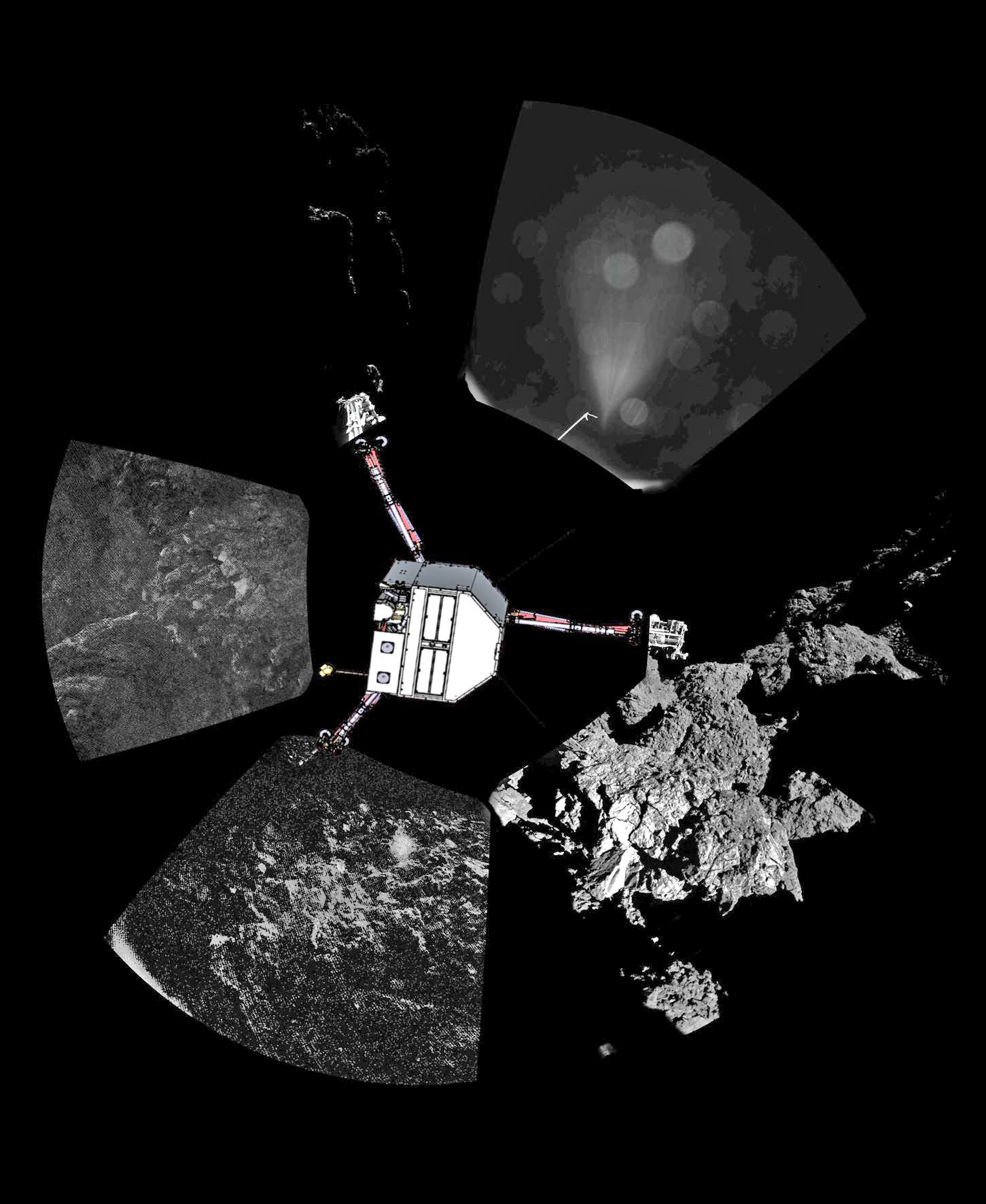
Stay tuned here for continuing developments.
Want to keep up-to-date with all things space? Be sure to “Like” AmericaSpace on Facebook and follow us on Twitter: @AmericaSpace
Missions » Rosetta »